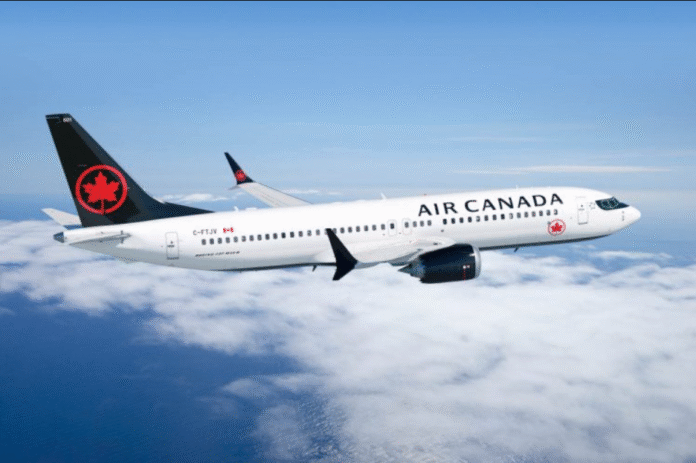Air Canada Strike Ends After Government Directive
The long-awaited moment has finally arrived: Air Canada strike ends after weeks of uncertainty, frustration, and disrupted travel for thousands of passengers. On Sunday, Air Canada confirmed that flights would resume following a binding directive from the Canadian Industrial Relations Board (CIRB).
This decision came after Jobs Minister Patty Hajdu ordered binding arbitration on Saturday, extending the flight attendants’ contract until a new agreement can be finalized. The move effectively halted the industrial action that saw over 10,000 flight attendants walk off the job in protest over pay and scheduling disputes.
Why the Air Canada Strike Ends Now
The Air Canada strike ends not because negotiations suddenly succeeded, but because the government intervened decisively. Minister Hajdu stepped in after weeks of tense discussions failed to bring both sides closer to an agreement.
The CIRB directive mandated that all Air Canada and Air Canada Rouge flight attendants return to duty by 2 p.m. ET on Sunday. Air Canada responded by confirming operations would gradually restart, though the airline warned it will take several days for full schedules to stabilize.
Travel Chaos During the Strike
The strike caused massive disruption at the peak of the summer travel season. Roughly 700 flights per day were suspended, leaving about 100,000 passengers stranded or scrambling to find alternatives.
Families were forced to cancel vacations, businesses missed critical meetings, and international travelers faced uncertainty about when, or if, they would reach their destinations.

Now that the Air Canada strike ends, the airline faces the massive challenge of restoring passenger confidence while managing lingering scheduling problems.
Air Canada’s Response
In its official statement, Air Canada expressed regret for the turmoil caused:
“Restart of operations will begin immediately, with first flights this evening, but Air Canada expects it will take several days before its operations return to normal. During this process, some flights will be canceled over the next 7 to 10 days until the schedule is stabilized. Air Canada deeply regrets the inconvenience for its customers.”
The acknowledgment shows the company is aware of the frustration travelers have endured. However, airline analysts warn that the brand may take months to fully recover its reputation.
What Happens Next After Air Canada Strike Ends
Although the Air Canada strike ends officially, the core issues that caused it remain unresolved. Flight attendants demanded better pay and fairer scheduling after months of unsuccessful negotiations.
With binding arbitration now in place, both the airline and the Canadian Union of Public Employees (CUPE) must wait for the arbitration process to deliver a legally binding outcome. Until then, the previous contract remains in effect.
This means travelers can expect Air Canada flights to continue operating, but union leaders have already hinted at possible further disputes if arbitration does not favor their members.

Impact on Passengers and Industry
The strike’s timing in the middle of peak summer travel magnified its impact. Other airlines, both domestic and international, reported unusual booking surges as passengers sought alternatives. Airports across Canada, including Toronto Pearson and Vancouver International, were scenes of long lines and tense travelers.
Now that the Air Canada strike ends, passengers will be relieved, but many remain skeptical about booking with the airline for upcoming travel.
Industry experts argue that this dispute highlights the broader issue of labor unrest in global aviation, as airlines worldwide grapple with inflation, staffing shortages, and changing traveler expectations.
Government’s Role in Resolving the Crisis
The Canadian government’s intervention proved decisive. By enforcing arbitration, officials effectively balanced the need to respect workers’ rights with the urgent requirement to protect the economy and travelers.
Had the strike continued, Canada risked widespread economic losses, with ripple effects across tourism, trade, and business sectors. By ensuring the Air Canada strike ends, the government avoided a deeper crisis that could have tarnished the country’s global travel reputation.
A Look at Previous Airline Strikes
The Air Canada strike ends in 2025, but this is far from the first labor dispute in aviation history. Past airline strikes, from British Airways cabin crew disputes to Lufthansa pilot walkouts, have shown how vulnerable global travel networks are to workforce unrest.
For passengers, these events serve as a reminder of how critical frontline airline staff are to keeping operations smooth and reliable.
Key Takeaways: Why the Air Canada Strike Ends
-
Government Arbitration: Binding arbitration halted the strike.
-
Massive Impact: Over 100,000 passengers were disrupted.
-
Temporary Relief: Flights are resuming, but cancellations will linger for 7–10 days.
-
Union Demands: Pay and scheduling remain unresolved.
-
Industry Lessons: Highlights wider labor unrest in aviation.
Conclusion: Relief, but Questions Remain
The Air Canada strike ends, but passengers, workers, and the airline itself are left with more than just relief, they are left with questions.
Will arbitration truly resolve the issues? Can Air Canada regain traveler trust quickly enough? And most importantly, will passengers feel secure booking future trips knowing such disputes can flare up again?
For now, flights are resuming, and the skies above Canada are clearing. But the turbulence behind the scenes may not be over just yet.

